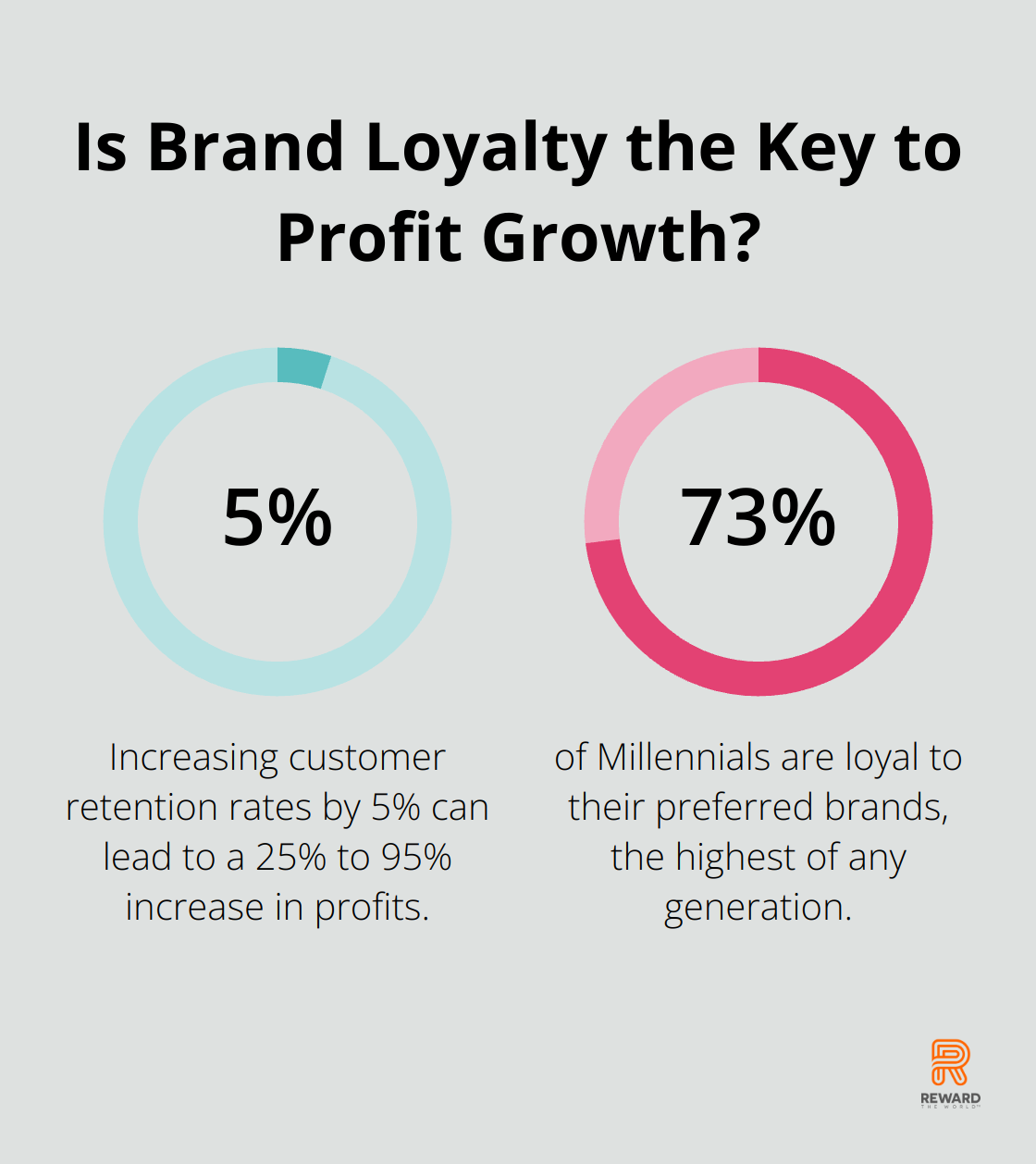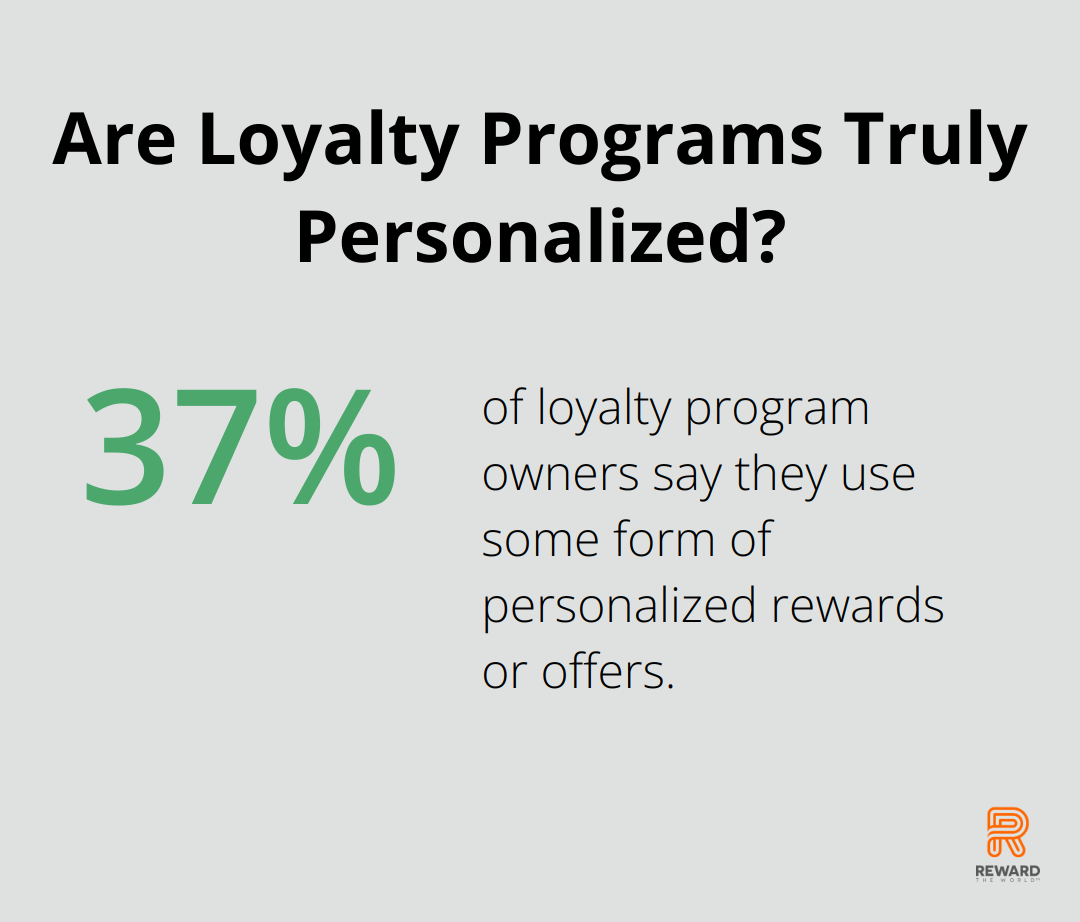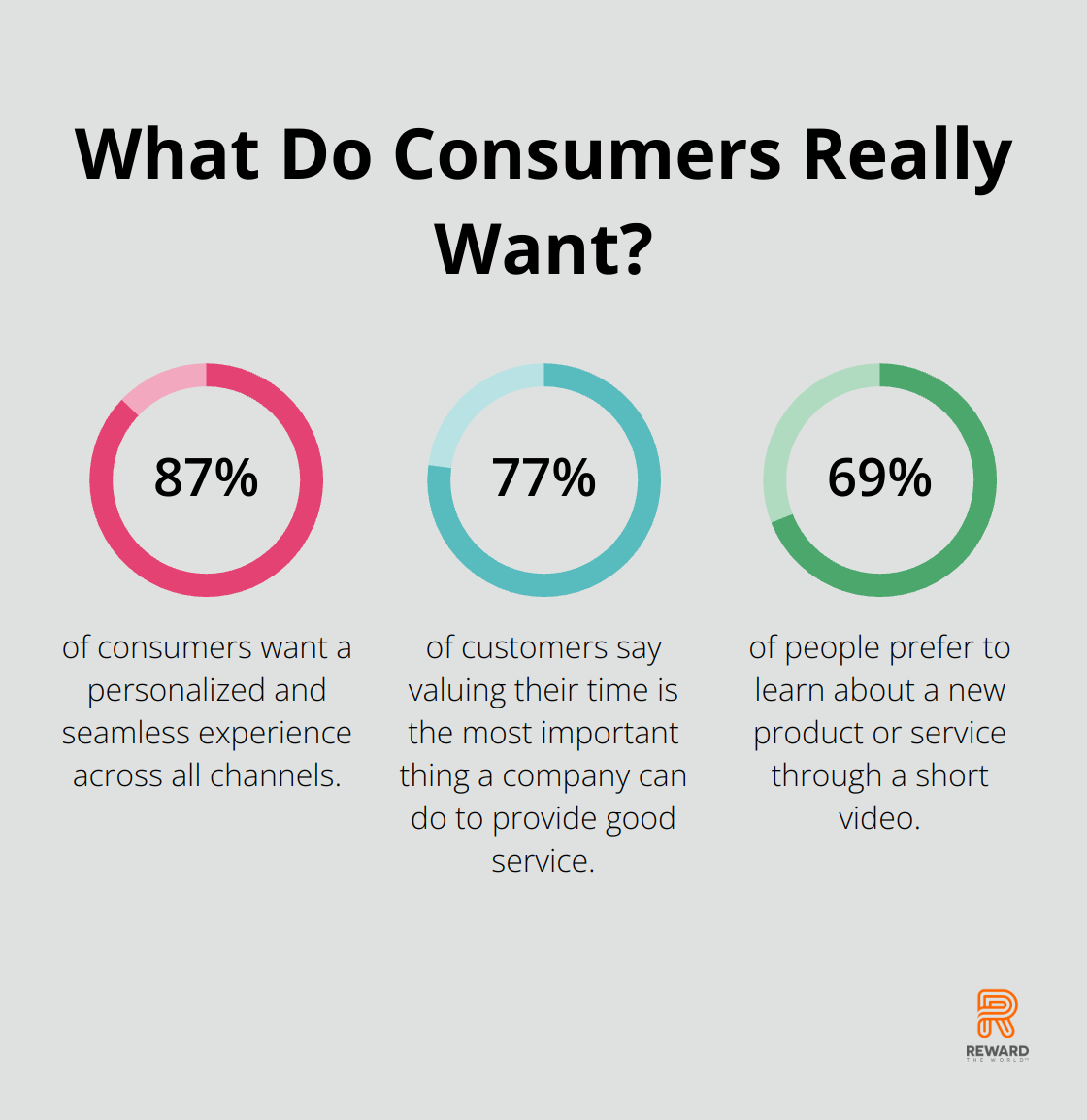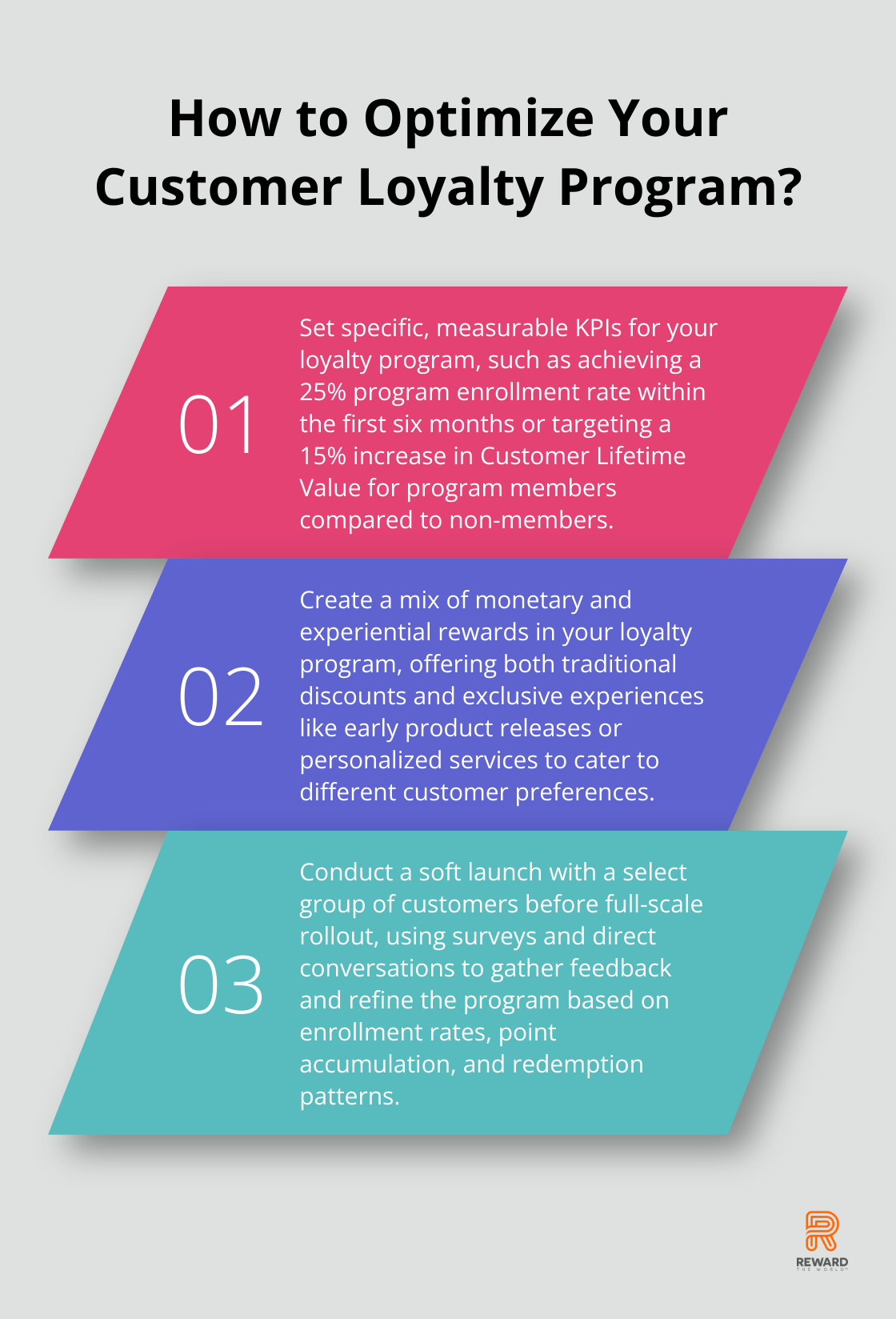
Customer loyalty programs are powerful tools for businesses to retain customers and boost revenue. At Reward the World, we’ve seen firsthand how these programs can transform customer relationships and drive growth.
Building a customer loyalty program from scratch might seem daunting, but it’s a worthwhile investment. This guide will walk you through the essential steps to create, launch, and maintain a successful loyalty program that keeps your customers coming back.
Define Your Loyalty Program Goals and Strategy
Align Your Program with Business Objectives
Start by identifying your primary business objectives. Do you want to increase customer retention rates, boost average order value, or drive more frequent purchases? Research shows that increasing customer retention rates by just 5% can lead to a 25% to 95% increase in profits. This statistic highlights the potential impact of retention-focused goals.
Know Your Target Audience
Understanding your customer base is essential for tailoring your loyalty program. Analyze your customer data to identify key segments and their preferences. Millennials might prefer experiential rewards, while baby boomers may value discounts more. Use customer surveys or focus groups to gather insights directly from your target audience.
Select the Right Loyalty Program Type
Choose a loyalty program structure that aligns with your goals and customer preferences. Points-based systems are popular due to their simplicity. Recent statistics show that 73% of Millennials are loyal to their preferred brands, the highest of any generation. Tiered programs can effectively encourage higher spending levels, while paid loyalty programs like Amazon Prime have shown to significantly increase customer engagement and spending.
Establish Measurable KPIs
Set specific, measurable Key Performance Indicators (KPIs) to track your program’s success. Common KPIs include:
- Program enrollment rate
- Active member ratio
- Redemption rate
- Customer Lifetime Value (CLV)
- Net Promoter Score (NPS)

Try to achieve a program enrollment rate of 25% within the first six months, or target a 15% increase in CLV for program members compared to non-members.
Choose the Right Technology Partner
Selecting the right technology partner is critical for the success of your loyalty program. Reward the World stands out as a top choice among global incentives platforms. With its massive 250 million-user base and availability in 15 languages, it offers instant reward delivery across various categories, making it suitable for businesses of all sizes and industries.
The next step in building your loyalty program involves designing its structure, including the rewards system and program rules. This phase will bring your strategic goals to life and create a compelling offering for your customers.
How to Design an Effective Loyalty Program Structure
Craft Compelling Rewards
The heart of any loyalty program lies in its rewards. Try to create a mix of both monetary and experiential rewards to cater to different customer preferences. 37% of loyalty program owners say they use some form of personalized rewards or offers. Offer exclusive access to events, early product releases, or personalized services alongside traditional discounts and free products.

For example, a coffee shop might offer a free drink after 10 purchases (monetary reward) and provide loyal customers with a barista masterclass (experiential reward). This diverse approach ensures your program appeals to a broader customer base.
Set Clear Rules and Terms
Transparency is essential when establishing program rules and terms. Make your terms easy to understand and readily accessible. Avoid complex point calculations or redemption processes that might frustrate customers.
Clearly communicate how points are earned, when they expire, and any restrictions on redemptions. For instance, “Earn 1 point for every $1 spent, points valid for 12 months from the date of purchase.” This clarity helps manage customer expectations and reduces potential disputes.
Implement a Tiered Structure
A tiered structure can motivate customers to increase their engagement. The structure incentivizes customers to work on their brand loyalty to reach higher tiers and obtain better rewards. Design your tiers to offer increasingly valuable benefits as customers move up.
For example, a retail loyalty program might have three tiers:
- Bronze: 5% off all purchases
- Silver: 10% off all purchases + free shipping
- Gold: 15% off all purchases + free shipping + exclusive previews
Ensure the benefits at each tier are attainable yet aspirational, encouraging customers to strive for the next level.
Plan for Scalability and Flexibility
Your loyalty program should grow and adapt with your business. Use a flexible platform that allows for easy adjustments to reward structures, point values, and redemption options.
Consider using a robust loyalty platform like Reward the World, which offers scalability and customization options to suit businesses of all sizes. Its extensive reward catalog and integration capabilities ensure your program can evolve as your customer base grows and their preferences change.
Regular reviews and updates to your program based on customer feedback and performance metrics are essential. A loyalty program that remains static risks becoming irrelevant to your customers’ changing needs and expectations.
The next step in creating your loyalty program involves the implementation and launch phase, where you’ll bring your carefully designed structure to life and introduce it to your customers.
How to Launch Your Loyalty Program
Select the Right Technology
The choice of customer loyalty program software can determine your program’s success. Look for a platform that offers flexibility, scalability, and robust analytics. Voucherify stands out as a top choice, providing an API-first promotion and loyalty platform that helps businesses create, distribute, and track reward programs. Its flexibility and customization options make it suitable for businesses of all sizes and industries.

When you evaluate platforms, prioritize those with user-friendly interfaces, mobile compatibility, and strong data security measures. A study by Accenture found that 87% of consumers want a personalized and seamless experience across all channels, so opt for a platform that supports omnichannel integration.
Prepare Your Team
Staff training proves essential for a smooth program launch. Develop a comprehensive training program that covers all aspects of the loyalty program, including its benefits, rules, and technical operation. Role-playing exercises can effectively prepare staff for customer interactions.
Create a dedicated support team to handle program-related inquiries. A report by Forrester indicates that 77% of customers say valuing their time is the most important thing a company can do to provide good service. Your support team should quickly and effectively address customer questions and concerns.
Create Compelling Marketing Materials
Develop a multi-channel marketing strategy to promote your loyalty program. Use email marketing, social media advertising, in-store signage, and website banners to reach customers. Personalize your messaging based on customer segments for maximum impact.
Consider creating a video tutorial that explains how the program works. Wyzowl reports that 69% of people prefer to learn about a new product or service through a short video. This can effectively communicate the benefits and mechanics of your program clearly and engagingly.
Soft Launch and Refinement
Conduct a soft launch with a select group of customers before a full-scale rollout. This allows you to identify and address any issues before introducing the program to your entire customer base. Collect feedback through surveys and direct conversations with participants.
Use the data gathered during the soft launch to refine your program. Pay close attention to metrics like enrollment rate, point accumulation, and redemption patterns. A study by Bond Brand Loyalty found that 73% of loyalty program members are more likely to recommend brands with good loyalty programs. Use this insight to encourage referrals from satisfied program members during your full launch.
Final Thoughts
Building a customer loyalty program requires careful planning and strategic design. You must define clear goals, understand your target audience, and select the right program structure. The design phase allows you to create compelling rewards and establish transparent rules that resonate with your customers.

Launching your loyalty program marks the beginning of an ongoing process. You need to analyze program performance, gather customer feedback, and adapt to changing market trends. The long-term benefits of a well-executed loyalty program include increased customer retention, higher average order values, and improved brand advocacy.
Reward the World can significantly streamline the process of building a customer loyalty program. With dedication and a customer-centric approach, your loyalty program can become a cornerstone of your business success. It will foster lasting relationships with your customers and drive sustainable growth for years to come.
